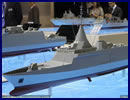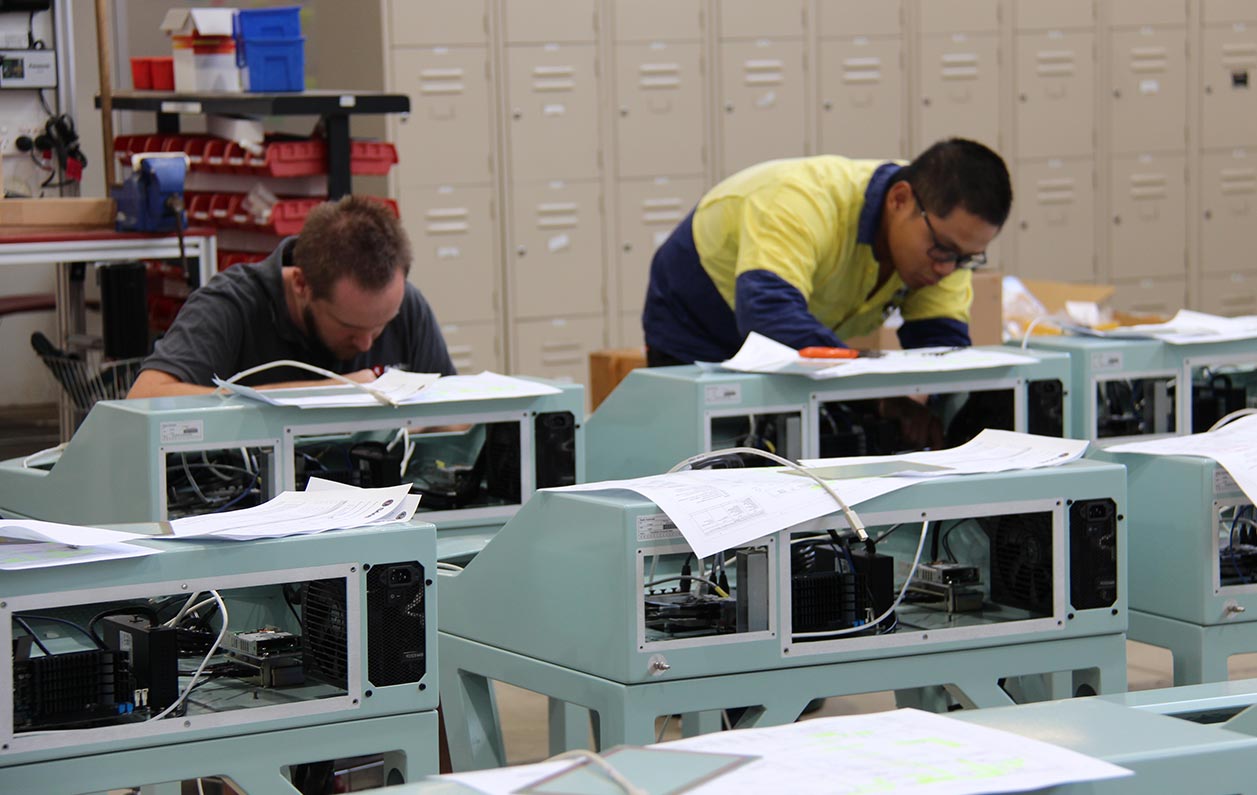Maybe yes and maybe no. The consoles and monitors in
this image do not really look like something readily available in most electronics distributors (at least here in the US, Oz might be different. There is also no real mention of what would presumably be server rooms with associated racks, backup systems and power as well as cooling. I could be mistaken, but I rather doubt that one could just go to a distributor to order a bunch of Cisco B480 M5's and use those to build a computer cluster running the CMS
They are usually a metal box and they integrate COTS or MOTS parts. SAAB doesn't build the consoles themselves, but outsources that to companies like SAGE. They have a video.
SAGE Automation manufactured more than 50 specialist training consoles in collaboration with Saab Australia. Working to a tight timeframe, SAGE relied on its scalable manufacturing workforce in Tonsley to complete the project ahead of schedule. The training consoles will be used by the Royal...

www.sageautomation.com
Yes, it takes time. But its doable. The consoles are made to standard design that fits most bridges. If you have to have something custom, well costs and time go up. But yes, most of this stuff is ordered from Dell, Cisco, IBM, etc. It used to be custom logic and circuits with custom silicon. But COTS PC's can do this stuff these days just fine. That being said, even COTS can have a 4-6 month lead, then you need to fit them into a console, and fit the console into the ship etc.
What I am saying is that as fun as it is to just pick options like its a candy store, reality is certain weapons aren't integrated then there is a huge cost (time money and resources) to do so. While volume and weight power and cooling may be reserved for a system, if a new model comes out or isn't available any more then that requires engineering changes and compromises to happen. Or if the client specs a higher power system, like the RAN would likely spec a high end mech serv airconditioning, then you end up eating into other power space cooling, this can cause a run away design problem as if there is nothign to steal from you need to start making the ship bigger.
We already have a super big high performance ship. Its the Hunter class. Its a space ship. But as a high end ship, spending more to make it better makes sense. There is no bigger western frigate ship than Australia's Hunter (probably). We will pay (time money people space power) for integration of things like CEA radars on that platform.
The OPV's is meant to be cheap and cheerful. OTS. Mass produced. Low cost. Off the rack ready to go. Commercial performance (in a good way, like reliable and easy to work on). Spending loads of money on upgunning and customizing an OPV beyond its capabilities makes no sense. You select a more capable design to begin with. Or you put all that shit onto the more capable platform.
The MMPV90 has:
- 9LV
- Giraffe radar
- 76mm
- space and weight for VLS (not Mk41 but space and weight are there in the original design for up to 16 mk41)
- anti-ship missiles (RBS, but NSM is nice and compact and allowed in the original design).
- Hangar
We don't have a 35mm gun, and acquiring it for a OPV may be a waste. I imagine it is a trade off in top weight somewhere for 16 VLS. Anzacs get around ok without a CIWS, and ESSM Blk II Is a very, very capable missile. You have a 76mm. So now splitting hairs between ESSM and a 76mm and maybe some .50cal or a 25mm mount. On a OPV more .50's or a mini typhoon would be way more useful and appropriate.
The OPV80 would have spec, all (98%) the things that the RAN other wise needs on a ship of that size. air conditioning, generation, toilets, cabins, power points, electrical distribution junction boxes, lighting etc. With suppliers and people experience fitting and supporting that in that type of vessel. So merging the two and making a MMPV90 for the RAN should be a fairly quick, straight forward process. As you are extending an existing arrangement, prices and quotes should be very competitive and very low risk.
Now I am not saying we should buy and build MMPV90s. But it isn't the dumbest idea.
The dumbest idea is trying to retrofit all those weapons on to the existing OPV80 Arafuras, which are already built. That is without a doubt mega stupid. The ship was not built for it. Shrinking a 90m design to 80m NVL had to loose all those weapon capability space/weight/volume/power etc. ASPI can sit it up its own bum. Even the builder will say that is a fools errand. They would probably walk away from the deal if you tried to force them to do it.
The next dumbest idea is to select a new similar ship and builder. You waste a billion and 5 years, even if you rig the selection tender and use someone who already has some sort of foot print. Military ships are tools. They are all form. There is no magic going on here, and ships, out of all platforms, have less magic than land vehicles or airplanes. They are designed more like buildings than like airplanes or cars. Think of them like a hotel building with weapons that float.
The next dumbest idea is trying to build a German corvette K130. An older design (pre 2000?), for an older yard, for a Navy with different needs, with basically no RAN weapons or systems. NVL would probably not bid on this project. Yes it was updated for Sa'ar, but that is a highly modified platform for the Israelis. Again no commonality with the RAN or the OPV80.
A MMPV90 is probably 2,500t and cost wise is effectively a hot line, of a ship we are already building 12 of. Tearing that up to build 3-6 of something else similar is a complete waste of time. Benchmark them, but know that it won't be built. As mentioned you have to work out how the yard is going to build the ship, and the ship yard needs to tool up for that design, and as a new prime you need a new supplier network and then new contracts need to be negotiated more tenders happen for components and logistics etc etc etc.
I get the attraction to things in the 5,000t range like the arrow 140. If we were right at the start, we could have looked harder at something like that with maybe a 100m OPV and a 140m frigate.
But we went there and said no. The FFG's were in that range, and the DDG's are really a 6,000t ship with growth "margin". You are no longer building a cheap and cheerful ship off a production line, and if we went with that size, build order would be down to 3-4 max. You are starting from scratch, new prime, new everything. We haven't build a ship in that size for a long time and the DDG's had notoriously old equipment fitted that had been in storage for 10+ years. For example the Yard at Henderson, isn't good at 5000t+ ships. The painting can handle whole OPV sized ships like an automotive spray booth, but can't handle whole frigates, only sections. Think about maintenance painting etc, costs go through the roof. Maybe 10 times the cost. 140m is a lot bigger than 80m and think about birthing etc. Another billion.. The build hall is configured to handle lots of 80-90m ships. Im not even sure if we can handle efficiently 95 or 100m ships.
Like it or hate it. We are in the 80-90m OPV business.
And the Type26/Hunter class business.
Theses are good modern designs. As we are finding out, new platforms become more risky and expensive. We are now stuck with what we have as a country going forward. If we axe away, you aren't just killing BAE or NVL, but every supplier that supplies to them.



